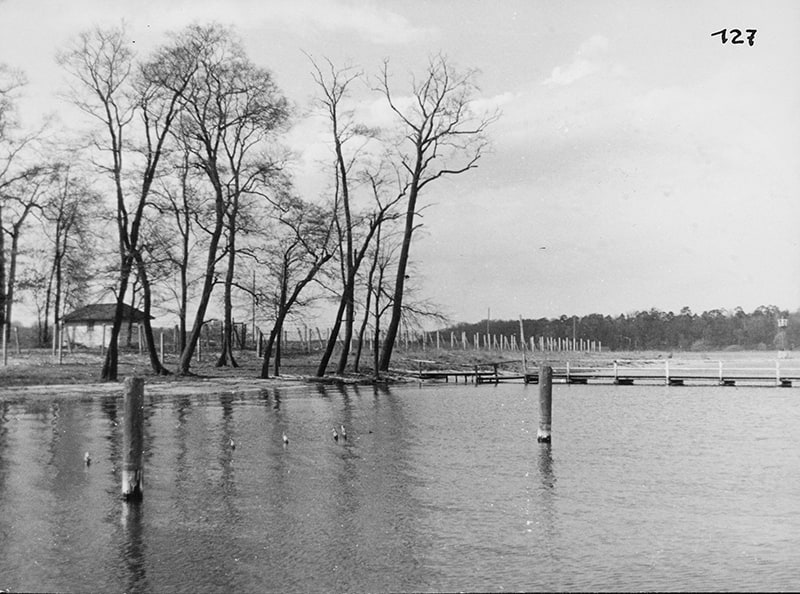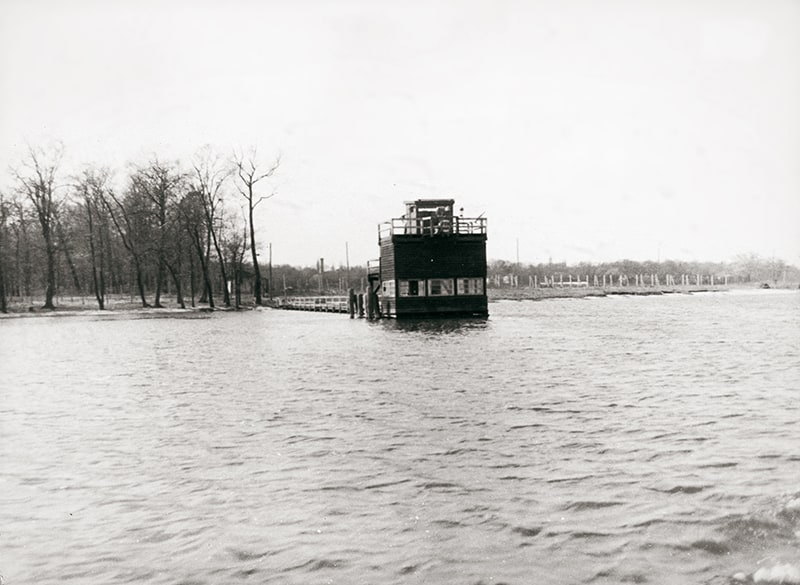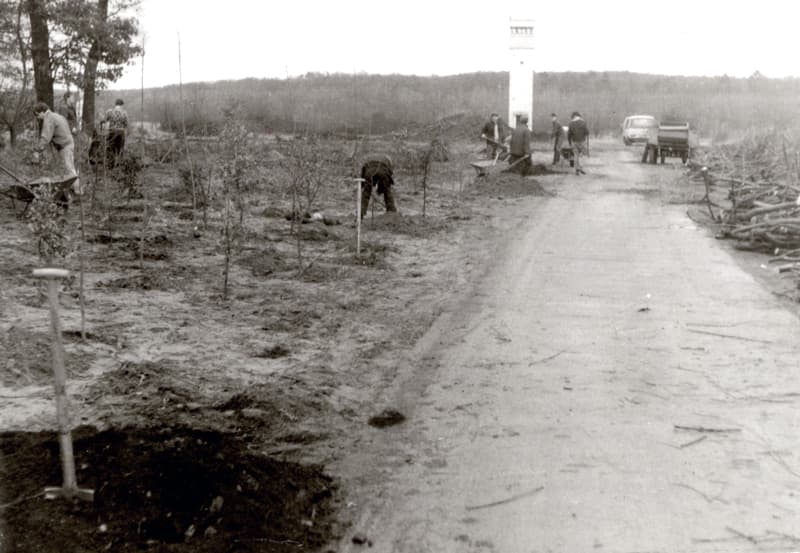Destroyed
park grounds:
New Garden
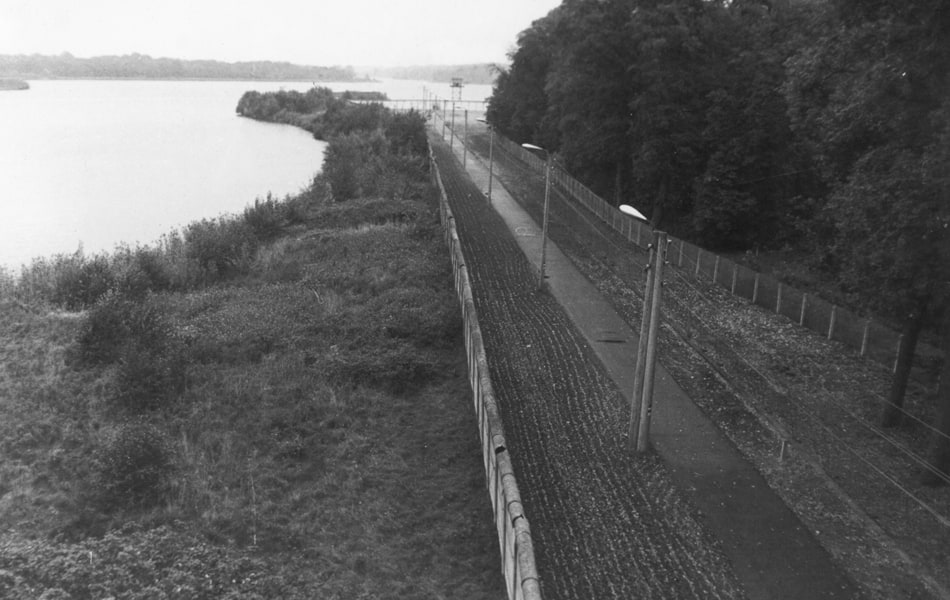 The death strip (pictured here ca. 1985 at Quapphorn spit) was floodlit at night - Photo: Potsdam Museum - Forum für Kunst und Geschichte, Sammlung Fotografie
The death strip (pictured here ca. 1985 at Quapphorn spit) was floodlit at night - Photo: Potsdam Museum - Forum für Kunst und Geschichte, Sammlung Fotografie
The New Garden was successively closed off and declared a border area in order to prevent escapes to the West after the construction of the Wall. Swan Bridge (Schwanenbrücke), which connected Schwanenallee with the New Garden, was closed by border troops in 1961. The Meierei and Quapphorn spit along with the adjacent public bathing area became part of the border zone in 1963. The Ermitage, built in 1796, had been knocked down to make way for a surveillance tower. Bathers went to Heiliger See lake instead, which still hosts a popular beach today.
The public bathing area at Quapphorn spit was closed in 1963 and declared a border area (photo ca. 1966) - Photo: Bundesarchiv DVH58/8480-GR48-0127
Large parts of the New Garden were still open to the public west of the death strip. Cecilienhof Palace, site of the famed Potsdam Conference of 1945, attracted visitors from around the world, including CPSU leader Mikhail Gorbachev and West German Foreign Minister Hans-Dietrich Genscher.
An existing structure at former Quapphorn beach was periodically used as an observation post by border troops (ca. 1966) - Photo: Bundesarchiv DVH58/8480-GR48-128
UN Secretary-General Kurt Waldheim complained about the view of the border facilities from the top floor after a visit to Cecilienhof Palace on February 8, 1975. A section of the hinterland fence was subsequently raised from two to six meters. Vines were planted on the wall to help obstruct the view. The massive amount of herbicides used in the death strip prevented them from growing, however.
In 1970–1, parts of the fence in the New Garden were replaced by a concrete wall. The continual expansion of the frontier barrier and the use of pesticides had a deleterious effect on much of the park’s vegetation and destroyed the vistas laid out by Peter Joseph Lenné in the early nineteenth century with views of the Church of the Redeemer in Sacrow, of Babelsberg Palace and the Pfaueninsel.
The historical buildings, too, were allowed to fall into ruin. In the mid-1980s, the park director of the New Garden, Otto Raudensky, was asked by border troops to cut down dead trees in the border area that threatened to fall on the border facilities. Raudensky seized the opportunity. In a period of just two weeks he managed to exceed his quota, felling trees and clearing the prospects between Marble Palace, Sacrow Palace and the palace on Pfaueninsel. The gardener’s minor achievement was dubbed the »Raudensky coup«.

A section of the hinterland fence by Cecilienhof Palace raised to a height of six meters was planted with vines in an attempt to obstruct the view of the border facilities (1989) - Photo: Grenzanlage in Nähe der Meierei/SPSG/Peter Rohn
In 1990, the park was declared a UNESCO World Heritage Site and subsequently underwent years of restoration by the Prussian Palaces and Gardens Foundation.
About 17,500 trees and bushes were planted in the former border strip in an effort to the restore the park (1991) - Photo: SPSG/ Gerd Schurig
Note: Exhibition catalog by Jens Arndt: Gärtner führen keine Kriege, 2016.
Video: Border fortifications at Bertinistrasse in Potsdam in February 1990
Quelle: videohai02


